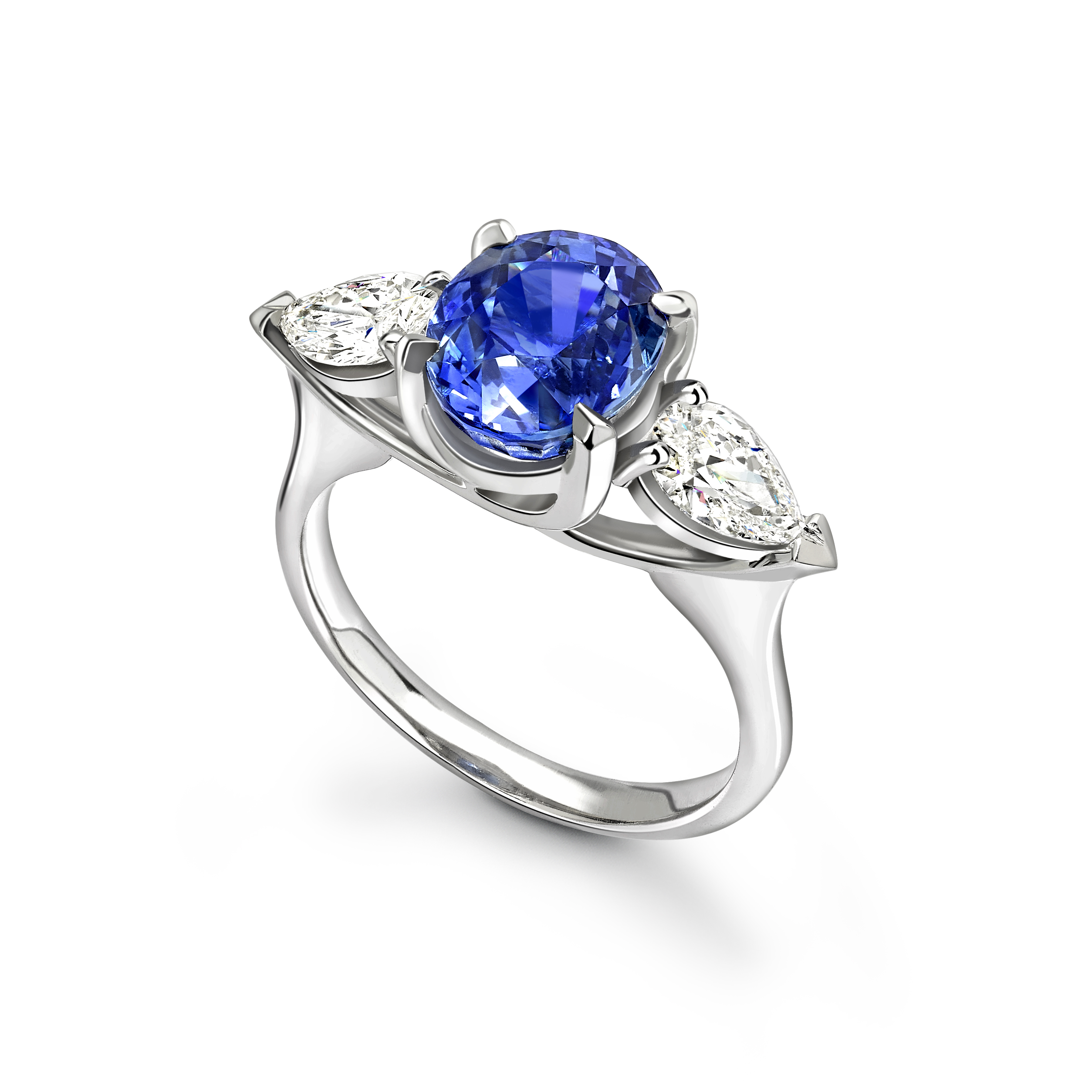Not many know that sapphires and rubies both come from the mineral 'Corundum'.
The popularity and price of these gems keeps increasing, due to increasing appreciation for their durability, in addition to their beauty. It can be a risky business finding the right stone with synthetics, imitations and heat enhancements meaning things aren’t always what they seem. So here are the top considerations when choosing a sapphire.
In the last 50 years, heat treatment has been a common practice used to enhance the colours of sapphires. A natural colour stone, especially as sizes increase, should always be accompanied by a certificate from a reputable laboratory. Unfortunately, this does drive costs somewhat, as to get a good colour naturally drives price to a premium.

"How are blue sapphires priced?"
Like diamonds, sapphires are evaluated on their colour, carat, cut and clarity. In addition to this, the proportions of the stone are also important. An expert will be evaluating the purity, and intensity of the blue. They want to blue to have a violet tone to it (rather than grey or green). In addition they are looking at the evenness of the colour throughout the stone. For example, a sapphire could have a deep blue culet, which pales towards the top of the stone. A skilled cutter will work this into their plan for cutting and polishing the stone. However the overall quality of the sapphire is not prized. The most valuable colour for a sapphire is called 'Royal Blue'. However, vivid natural colours carry high premiums if occurring naturally.

"What can I do when choosing a sapphire?"
- Look at the way the stone has been cut. Does it appear very dark, or lighter than you’d expected? This may indicate the proportions are either too deep, or too shallow. If you have a stone that is cut too deeply, it is going to sit very high when set in jewellery. Coversely, if the stone is too shallow (cut this way when stones are a very dark blue) its ability to reflect light is diminished, the effect when looking through the centre, will be more like looking through a window.
- Is the colour consistent? Is there a darker patch of blue in the centre, or at one side of the stone, or when you look at the stone on its’ side, is the colour confined to the top or bottom? A good sapphire should have an even colour distribution.
- Is the stone clean inside, or can you see tiny marks (inclusions)? These are natural in any stone, but too many will make the stone appear cloudy, or scratched. They will also (like diamonds) influence the way light passes through the stone.
- A stone with very deep proportions may still be advertised as a higher carat weight. If your stone looks very chunky underneath, in addition to the complications listed in point 1, you may wind up paying more for a stone that looks smaller than lower carat weight stones which are better cut.
Remember that you will get what you pay for. You can follow all of the above points when choosing a sapphire, but still end up with a heat treated or synthetic stone if you aren’t careful – the simple reason being that it takes time to build the expertise to make an assured decision. If you are planning to buy an expensive sapphire, it should be accompanied by the correct certification. Any reputable store would agree with this. Certification will verify where the stone has come from, and if it has been heat treated or not.

If you are choosing a loose stone (for example you’ve been tempted while on holiday in Sri Lanka or Thailand) remember that stones are still heat treated over there! In addition, pay attention to the depth of cut, and the shape. If the stone is not a standard size, it may cost you a lot more than you expected on your return to the UK, to have a setting made. Consider whether the stone is truly round, or has symmetry if a cushion shape or oval.
You may elect to go with a local jeweller while you are there, which may cut some costs, however there are quality risks to consider as well. If you don’t have a local who can recommend a good shop, then remember the tour guide is quite likely to be receiving a commission which does not assure you that you are going to get a piece of jewellery which will last!
"I think my sapphire has been heat treated!"
It is important to stress here, that even vintage rings may have heat treated sapphires in them. If it has enhanced the stone colour, then it is understandable why this course of action has been sanctioned. And of course, heat treated sapphires are more affordable than natural colours. What is unethical, is if you have been sold an item of jewellery where the description is for a natural sapphire, and you have paid the premium.
Even a sapphire expert may struggle to detect a really skilfully heat treated stone – it would need to be verified in the laboratory. There are little give-aways however, as I explained to a client when we saw a tangerine orange coloured stone which she was very happy she'd paid $350 for, it was definitely heat treated as a natural orange would have been ten times the cost!
As with everything, it is balancing out the appeal of the stone to you, with its’ stated value to protect your investment. Sapphires are beautiful stones, and should be enjoyed. Hopefully here you have a few pointers to help you understand the key considerations for choosing a sapphire that the experts consider. But as with anything, nothing beats years of experience!